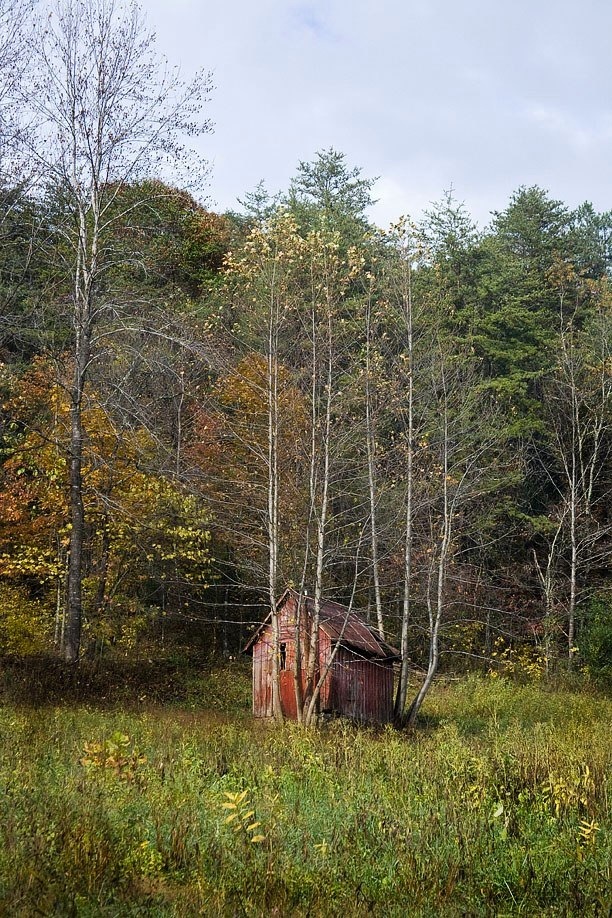There’s a place nearby where the Rockfish River winds through a ripple of hills. The hills are small, just a faint echo of the mountain ridge to the west. The river is, too; never more than a stream really. In most places you can wade across without getting your knees wet. A good sized tree falling over will span the banks. But It cut itself a narrow cliff-lined canyon through these hills. The steep stone walls, old and grey, seal it off from the outside world. Indirect light filters in softly most of the day through a clerestory of trees along the rim.
At the bottom of the passage it’s always cool and quiet, usually just the sound of water over rocks and crickets. A natural sanctuary. When we built gothic churches out of stone, this is what we had in mind. About 12 years ago, a group of Tibetan refugees led by a monk built a community and a temple on one of the hills overlooking the valley. They call it, appropriately enough, Serenity Ridge.
Water weeps from cracks in the stone walls year round. In spring and summer they’re draped with garlands of flowering vines and moss. In the fall, the vines themselves flower with color briefly. Soon every crack with a seep or spring will be a frozen cascade of ice that will grow steadily through the winter all the way down the face.
I should remember to go back and see.
Springhouse, poplars
A narrow road follows the river, and there are a few homes scattered along the way, tucked into little niches where the hills back off a bit, like chapels off the nave. Some new, some quite old, others all but gone. Of a few there’s nothing left but an old spring house and a bit of foundation.
A mile or so further downstream the river passes through the little village of Schuyler. The narrow canyon and fall of the river made it a prime location for a dam and mill, and around that the village formed. There’s a mostly mined-out soapstone quarry, too, and a larger dam that powered it still makes electricity. It’s where Earl Hamner grew up, and his memories of that place became The Walton’s.



